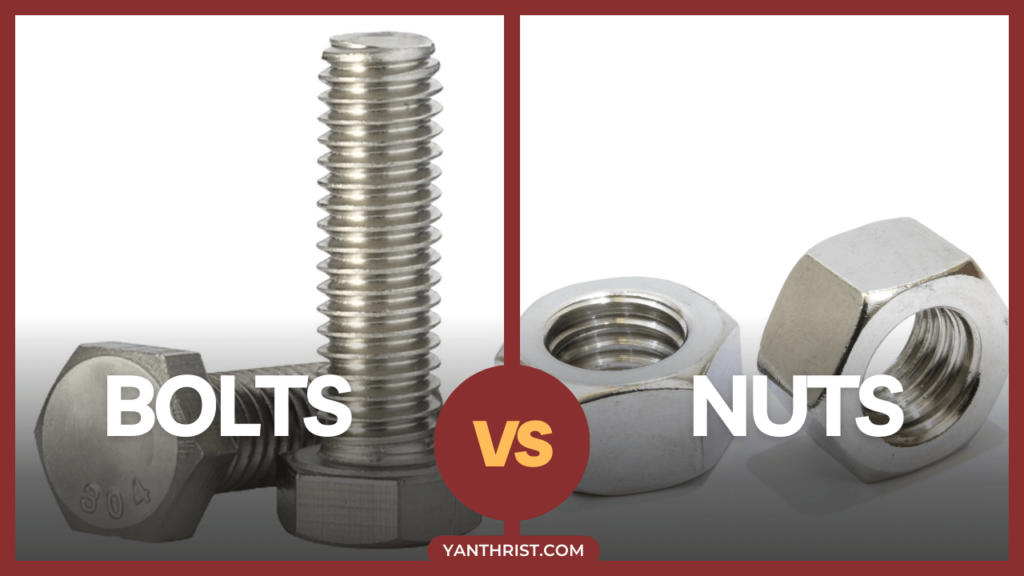Before diving into the various examples of potential energy, let’s first understand the concept itself. Potential energy is defined as the energy possessed by an object due to its position or configuration. It is a form of mechanical energy, often referred to as “stored energy.” An object has potential energy based on its relative position or configuration within a force field. For instance, if you lift an object above the Earth’s surface, it gains potential energy due to its height above the ground.

Some examples of Potential Energy
1. Examples of Gravitational Potential Energy
Gravitational potential energy is the energy an object possesses due to its height above the Earth’s surface. This type of potential energy exists within a gravitational field, which is a force field. When you do work to raise an object against gravity, this work is stored in the object as gravitational potential energy. Therefore, gravitational potential energy only exists when an object is at a particular height above the Earth’s surface.
- A book on a shelf: The book has gravitational potential energy due to its height above the ground.
- A child at the top of a slide: The child has potential energy that converts to kinetic energy when they slide down.
- Water behind a dam: The water stored at a higher elevation has gravitational potential energy.
- A roller coaster at the top of a hill: The roller coaster car has maximum potential energy at the highest point.
- A fruit hanging from a tree: The fruit has potential energy due to its position above the ground.
- A rock perched on a cliff: The rock has gravitational potential energy because of its height above the base of the cliff.
- A skier at the top of a slope: The skier has potential energy that will convert to kinetic energy as they descend.
- A diver on a diving board: The diver has potential energy due to their height above the water.
- A pendulum at its highest point: The pendulum has maximum potential energy at the peak of its swing.
- A mountain climber at the summit: The climber has potential energy due to their elevation.
- A toy drone hovering above the ground: The drone has potential energy based on its height.
- A cat on a rooftop: The cat has potential energy due to its position above the ground.
- A plant pot on a windowsill: The plant pot has potential energy due to its height above the floor.
- A satellite in orbit: The satellite has gravitational potential energy due to its position relative to Earth.
- A flag on a flagpole: The flag has potential energy due to its height above the ground.
- A chandelier hanging from a ceiling: The chandelier has potential energy based on its elevation.
- A clock’s pendulum at its highest point: The pendulum has maximum potential energy before it swings back.
- A kite stuck in a tree: The kite has potential energy due to its position above the ground.
- A stack of firewood: The top pieces have potential energy due to their height.
- A snow pile on a mountain: The snow has potential energy due to its elevation.
- A ball at the edge of a table: The ball has potential energy due to its height above the floor.
- An elevator at the top floor: The elevator has potential energy due to its elevation in the building.
- A bucket of water lifted from a well: The bucket has potential energy due to its height above the well.
- A parachutist before jumping: The parachutist has potential energy due to their height above the ground.
- A hot air balloon in the sky: The balloon has potential energy due to its height above the ground.
- A plane cruising at altitude: The plane has potential energy due to its height above sea level.
- A grain silo filled with grain: The grain at the top has potential energy due to its height.
- A painter on a ladder: The painter has potential energy due to their height above the ground.
- A lighthouse lamp: The lamp has potential energy due to its elevated position.
- A suitcase placed on a luggage rack: The suitcase has potential energy due to its height above the ground.
2. Examples of Elastic Potential Energy
Elastic potential energy is the energy stored in objects that can be stretched or compressed. A common example is a compressed spring. When you change the shape of a spring by compressing it, you do work on the spring. This work is then stored in the spring as elastic potential energy. Thus, when an object’s shape or configuration changes, it gains elastic potential energy.
- A compressed spring: When a spring is compressed, it stores elastic potential energy.
- A stretched rubber band: The rubber band stores energy when stretched.
- A drawn bow: When an archer pulls back on the bowstring, the bow stores elastic potential energy.
- A bent diving board: The board stores energy when bent before a diver jumps.
- A trampoline: The fabric and springs store energy when the trampoline is stretched by a jumper.
- A twisted rubber toy: Wind-up toys store elastic potential energy in twisted rubber bands.
- A bungee cord: The cord stores energy when stretched during a bungee jump.
- A stretched guitar string: When plucked, the string’s tension stores elastic potential energy.
- A squeezed stress ball: The ball stores energy when compressed.
- An inflated balloon: The balloon stores elastic potential energy in its stretched rubber.
- A mattress spring: The springs store energy when compressed under weight.
- A squash ball: The ball stores energy when deformed by impact.
- A car’s suspension springs: The springs store energy when compressed by the vehicle’s weight.
- A twisted swing set chain: The chains store energy when twisted.
- A stretched slingshot: The rubber band of the slingshot stores elastic potential energy when pulled back.
- A compressed sponge: The sponge stores energy when compressed and returns to its original shape when released.
- A coiled metal strip in a mechanical watch: The metal strip stores energy when wound.
- A flexible diving pole: The pole stores energy when bent and releases it to propel a diver.
- A bouncy ball: The ball stores elastic potential energy when deformed upon hitting a surface.
- A wind-up toy car: The car’s internal spring stores elastic potential energy when wound up.
3. Examples of Chemical potential energy
- Batteries: Chemical reactions within batteries store energy that can be released to power electronic devices.
- Gasoline: The chemical bonds in gasoline store energy, which is released during combustion in car engines.
- Food: The chemical bonds in food molecules store energy, which our bodies convert into usable energy through metabolism.
- Wood: The chemical energy in wood is released as heat and light during combustion in a fireplace or campfire.
- Coal: Chemical energy stored in coal is released during combustion to produce electricity in power plants.
- Natural Gas: The chemical energy in natural gas is released when it is burned for heating or electricity generation.
- Hydrogen Fuel: Hydrogen gas stores chemical energy that can be released in fuel cells to generate electricity.
- Explosives: Chemical compounds in explosives store energy that is rapidly released during detonation.
- Photosynthesis: Plants store chemical energy in glucose and other organic molecules created during photosynthesis.
- Propane: The chemical bonds in propane store energy, which is released when burned in grills, stoves, or heaters.
Why Objects Gain Potential Energy
Objects gain potential energy when their position or configuration is altered due to the work done on them. For example, when you lift an object onto a table, you exert a force and move the object against gravity. According to physics, work done is equal to force multiplied by displacement. The work you do while lifting the object is stored as gravitational potential energy in the object.
The SI unit of potential energy is the joule (J).
Other Forms of Energy
We will explore 10 different forms of energy with easy definitions and examples.
1. Kinetic Energy
Definition: Kinetic energy is the energy possessed by a body due to its motion.
Examples:
- A moving car possesses kinetic energy.
- An airplane in flight has kinetic energy.
- A bicycle in motion possesses kinetic energy.
- Humans walking or running have kinetic energy.
Remember, when a body stops, its kinetic energy becomes zero.
2. Potential Energy
Definition: Potential energy is the energy stored in an object due to its position in a force field.
Examples:
- A ball raised above the ground stores gravitational potential energy.
- An airplane flying above the ground possesses potential energy.
- Birds flying above the ground have potential energy.
Potential energy is stored energy that results from changing an object’s position in a force field, such as a gravitational, magnetic, electric, or nuclear field.
3. Sound Energy
Definition: Sound energy is generated due to the movement of vibrations.
Examples:
- A guitar string vibrating produces sound energy.
- Human vocal cords vibrating create sound energy.
- A drum’s membrane vibrating generates sound energy.
Sound energy travels through mediums like solids, liquids, and gases, but not through a vacuum.
4. Heat Energy (Thermal Energy)
Definition: Heat or thermal energy is generated when the temperature of matter rises.
Examples:
- Cooking food generates heat energy.
- The sun produces a lot of thermal energy.
- A car’s engine burns fuel to generate thermal energy.
- The human body produces heat to maintain body temperature.
When the temperature of an object increases, heat energy is generated.
5. Chemical Energy
Definition: Chemical energy is the energy stored in the chemical bonds of compounds.
Examples:
- Energy stored in the bonds of water molecules formed from hydrogen and oxygen.
- Food contains chemical energy that our bodies use for metabolism.
- Fuels like gasoline and coal contain chemical energy.
- Batteries store chemical energy.
Chemical energy is found in all substances that contain stored energy in their chemical bonds.
6. Mechanical Energy
Definition: Mechanical energy is the sum of kinetic energy and potential energy.
Examples:
- An airplane flying above the ground has both kinetic and potential energy.
- A hammer hitting a nail possesses mechanical energy.
- Gas balloons rising above the ground have mechanical energy.
Mechanical energy is the total energy due to both motion and position.
7. Radiant Energy
Definition: Radiant energy is transferred through electromagnetic waves.
Examples:
- Sunlight is radiant energy received from the sun.
- Light from a bulb is radiant energy.
- Cell phones use radiant energy to transfer voice and messages.
Radiant energy is energy transferred by electromagnetic waves.
8. Electrical Energy
Definition: Electrical energy is derived from the movement of charged particles.
Examples:
- Fans use electrical energy to operate.
- Electric irons use electrical energy to iron clothes.
- Electronic devices like computers, TVs, and laptops use electrical energy.
- Electric cars use electrical energy as fuel.
Electrical energy is essential in our daily lives and is generated by the motion of charged particles.
9. Nuclear Energy
Definition: Nuclear energy is released by splitting atoms.
Examples:
- Splitting a uranium atom generates nuclear energy.
- Nuclear power plants use nuclear energy to produce electricity.
Nuclear energy is the energy of the nucleus of an atom, released through nuclear reactions.
10. Elastic Energy
Definition: Elastic energy is stored as a result of applying force to deform an elastic object.
Examples:
- Compressing or stretching a spring stores elastic potential energy.
- Stretching a bow stores elastic potential energy, which converts to kinetic energy when released.
- Stretching the rubber of a slingshot stores elastic potential energy, which changes to kinetic energy when released.
Elastic energy is a form of potential energy stored in objects that can be deformed and then return to their original shape.
I hope you have learned about the 10 different forms of energy and their definitions and examples.
Other Examples of Potential Energy
- A coiled spring has potential energy due to its compressed state.
- A stretched rubber band stores potential energy because of its stretched configuration.
- River water at the top of a waterfall possesses potential energy due to its height.
- Tree branches high up in a tree have potential energy because of their elevated position.
- A wrecking ball lifted by a crane gains potential energy, enabling it to demolish buildings.
- The food we eat contains chemical potential energy, which our bodies use for metabolism.
- Bullets before being fired from a gun possess potential energy due to their position.
- A satellite before launch has potential energy before it is placed in orbit.
Understanding these examples helps illustrate how potential energy is present in various forms and situations in our everyday lives.


